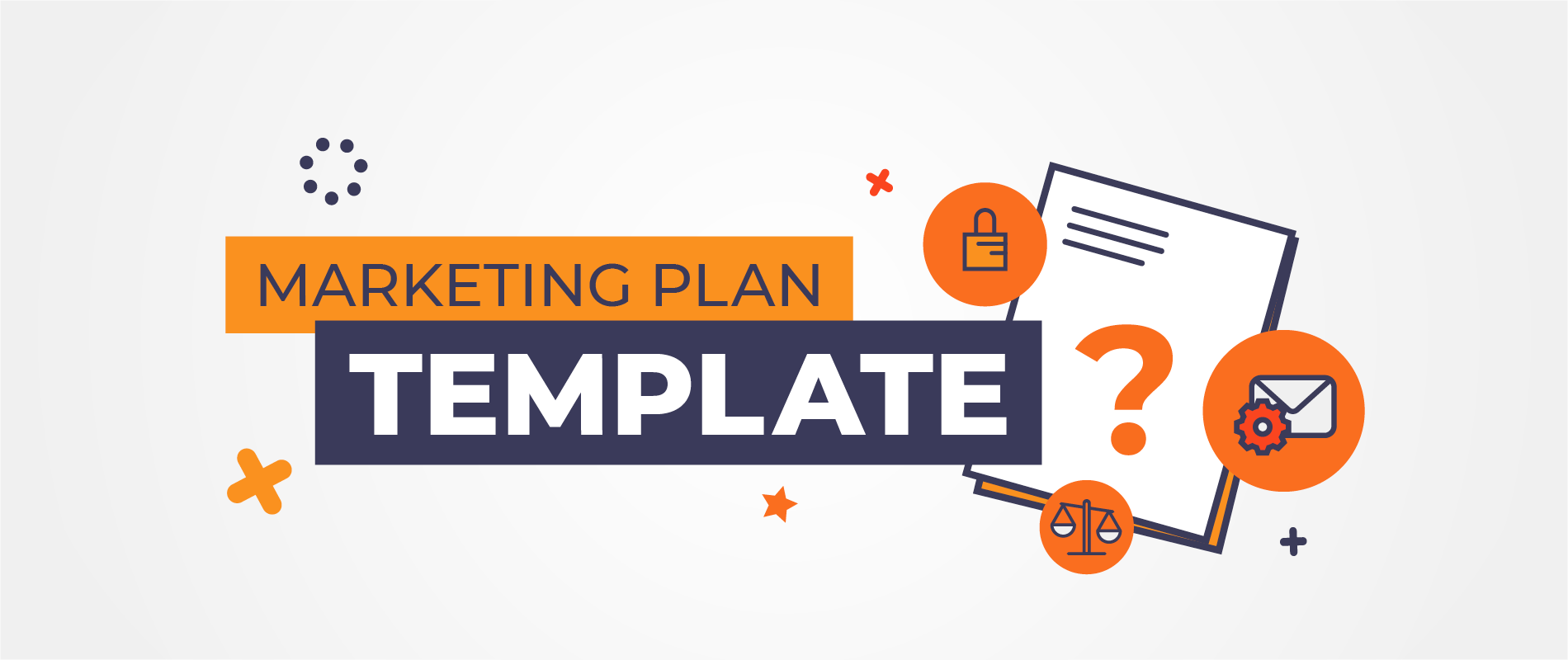
Get weekly
HubSpot updates
Have you ever tried to put together a digital marketing strategy from scratch?
It’s not a straightforward task, whether you’re putting together your first one or even if you’re an experienced marketer.
There’s a huge amount of information, research and creativity that has to go into your marketing plan, so anything that can make the process a little easier is more than welcome.
This is where a digital marketing plan template comes in.
By creating a repeatable and easy to complete template you can at least focus your thinking and make sure you cover all of the essential elements every time.
Table of contents
What is a digital marketing plan template
Who is a digital marketing plan for
Why it is important to have a digital marketing plan template
What should go into your template
What is a digital marketing plan template?
A digital marketing plan template is a document or spreadsheet that you fill in every time you start working on a new digital marketing plan.
It should be designed in such a way that allows it to be used for multiple industries, buyer personas and objectives. It’s no use having a template if you have to reinvent the wheel every time you’re promoting a new product or service.
Who is the digital marketing plan for?
Primarily, the digital marketing plan is for the marketing team. It will shape your thinking and planning for the next period, and make sure you stay on track and don’t get distracted by other things that aren’t as well thought through.
But the marketing plan is also for senior stakeholders.
It will crystallise the results you’re trying to achieve, and demonstrate how the strategy and tactics you’re going to implement will help you deliver them.
To complement the plan, before sharing it with any particular department pull out anything specific to them. How will it help them with their goals too?
READ MORE: How to Get Stakeholder Buy-in for Your Inbound Marketing
Why is it important to have a digital marketing plan template?
Sometimes, your marketing plans will fail.
And that’s okay.
The most successful brands and digital marketing agencies in the world don’t always get it right, and it should offer a learning opportunity. Of course, you still want to maximise your chances of success, so it’s important to know why things go wrong.
However, this doesn’t mean you should tear it up and start all over again.
Every marketing plan will share some core elements, and as such it makes sense to template this to make it repeatable and scalable. Not only does it make it easier for you to create multiple strategies and plans, but it also makes it easier for other members of the marketing team to work on marketing plans too.
The plan template can also help you to avoid mistakes. For example, you won’t ever be able to forget to consider your buyer personas when there’s a section there waiting to be filled in.
Let’s take a look at a famous example:
Back in 2013 cereal brand Nesquik launched #NationalBunnyEarsDay… or at least they tried to.
The company created a mobile app that would allow users to place bunny ears onto photos and share them across social media using the hashtag, but the campaign delivered just two mentions on Instagram and nine mentions on Twitter. That’s a pretty spectacular failure.
The campaign had failed to consider a number of things: there was no good reason for anyone to join in, the main buyer persona was parents (not the most likely demographic to engage with a selfie campaign, and the launch wasn’t tied to anything that people cared about.
Suffice to say, the first National Bunny Ears Day was the last.
What should go into your template?
So what information do you need to be recording in your marketing plan templates? From what you’re looking to achieve to identifying your target audience and which channels you’ll use to succeed, this is going to be a comprehensive document.
A business summary
This will provide an overview of your business and should include:
Your mission statement
What is your purpose for being? This should be about what problems your product solves for your customers, and also summarise your companies’ values.
SWOT analysis
A SWOT analysis is an evaluation of your strengths, weaknesses, opportunities and threats.
What are you currently good at?
What do you need to get better at or what do you need to fix?
What is your industry crying out for that isn’t currently being provided?
What’s going to hinder your future growth?
Goals
Making sure you have your business goals clearly laid out will be arguably the most important element of your marketing strategy.
Without understanding what you want to achieve, how can you ever hope to get there?
What’s more, it’s vital that these goals are SMART. Specific, Measurable, Achievable, Relevant, and Time-specific.
Read more about SMART goals here.
Marketing initiatives
Now you know what your SMART goals are, you can start planning the activity that will help you achieve them.
This section of the plan should include a description of the initiative, the specific goal of the initiative, and the metrics that will define success. For example:
Description: Over the next 12 months, we’ll work on building a blog property that becomes a go-to resource for our customers’ burning questions - and our number-one source of leads.
Goal of initiative: To increase our website’s rank on Google and create critical top-of-the-funnel marketing content that helps our sales team start more conversations with prospects.
Metrics to measure success: 50,000 organic page views per month / 10 content downloads per month.
Target audience
This section of the marketing plan should include three things: the industries you’re targeting, specific buyer personas, and competitor analysis.
Industries
Avoid targeting too many industries with a single marketing plan. Aim for one or two to ensure your messaging stays highly relevant.
Buyer personas
A buyer persona is a semi-fictional representation of your ideal customer. It should cover their primary challenges, buying habits, demographic information and much more besides. These personas will help you create effective marketing initiatives that resonate with the people you need to reach.
Check out our Ultimate Guide to Identifying Buyer Personas for full and comprehensive information on this critical aspect of your marketing strategy.
You can download a buyer persona template here
Competitor analysis
Which are the companies you’re up against? What products or services of theirs might your personas also be interested in? Understanding what they’re doing will help you to improve what you’re doing.
Market strategy
Break your marketing strategy into the following areas:
Product
What products or services are you entering the market with? What problems do they solve for your target audience?
Price
What’s the value of this product, and is it competitive with the rest of the market? Think about any promotions or discounts you might want to run to promote it.
Promotion
This isn’t simply which platforms will you use to promote the product (we’ll cover that in a section coming up), but how will the content you create drive value?
People
This should be a list of everyone in the marketing team and beyond who will play a bit in delivering the marketing strategy. Detail what each of them will do, who they’ll be reporting to and what they’ll be measured against.
Process
What’s the process for taking someone on a journey from being a lead through to becoming a customer. What needs to happen and who needs to be involved? This will also help you to understand what content is required to facilitate the journey.
Budget
List all of the marketing expenses you expect to incur over the course of the next year. This might include marketing software, attending events, as well as budgets for paid social and paid search.
This will only be an estimate, but it’s important to get this down at the beginning to avoid running out of money unexpectedly, or getting to the final quarter of the financial year and realising you’ve got unspent budget.
Marketing channels
Which channels are you going to leverage to promote your products? You should’ve identified the best channels for reaching your target audience during the personas stage.
Note down the purpose of each channel, as well as the metrics that you’ll use to measure success.
Here’s at Klood we’re the B2B SaaS marketing experts, and are best placed for helping you to formulate a winning inbound marketing strategy. Want to find out more? Download our guide below.
Some ready-made templates for you
HubSpot have a number of free templates that you can download that you may find useful and save you some time

